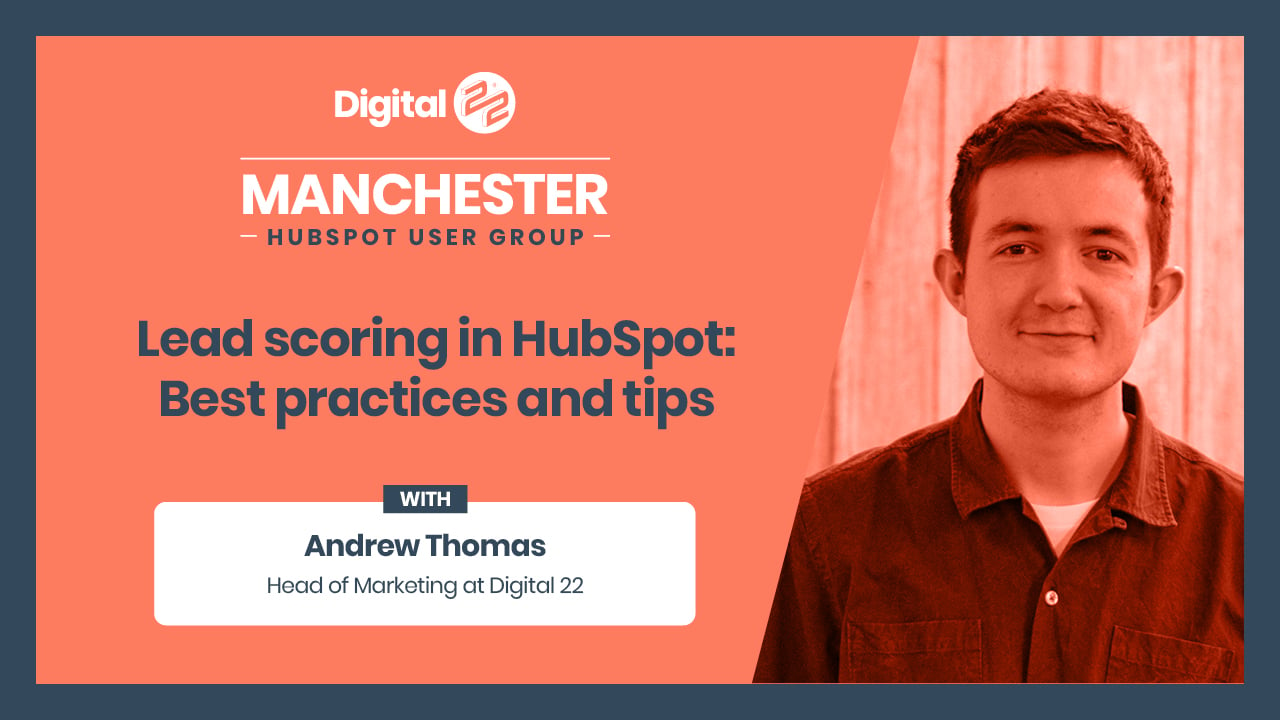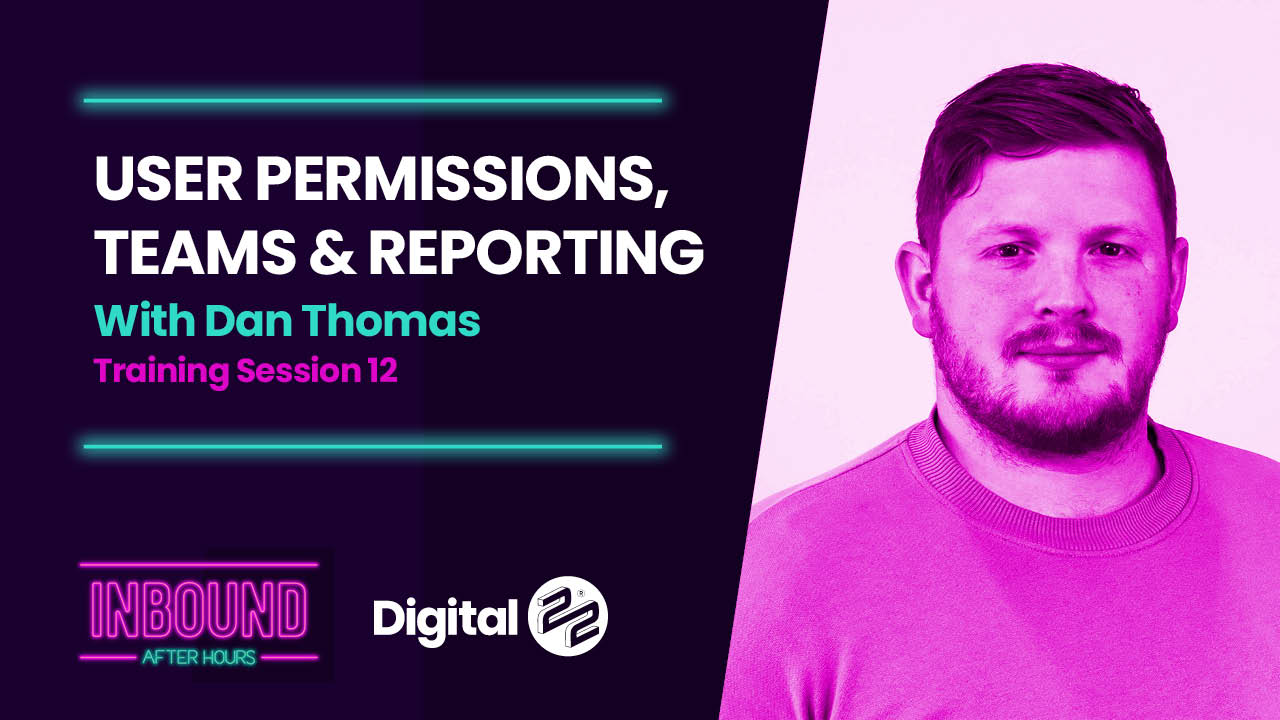Looking to learn about everything HubSpot? Then you’ve come to the right place. Navigating around a new tool and getting to grips with its functionalities can feel like a daunting task, but I’m here to tell you where to start so you can become the go-to HubSpot expert in your organisation.
If you’re interested in the Marketing Hub, have just started using it or want a refresher on the capabilities it offers, then I have the tips you need below.
- What is the HubSpot Marketing Hub?
- Tip #1: Utilise your HubSpot settings
- Tip #2: Get familiar with your HubSpot Marketing Hub
- Tip #3: Stay compliant, without the fuss
- Tip #4: Score those leads
- Tip #5: Pull data, analyse and learn
- Tip #6: Migrate your contacts and create segments
- The benefits of HubSpot don't end here...
What is the HubSpot Marketing Hub?
First things first: What exactly is the HubSpot Marketing Hub? It’s a platform of integrated marketing tools for you to manage your entire inbound marketing campaigns and get the results you’re aiming for.
It has everything from email marketing and web page creation to omnichannel automation and in-depth reporting tools. If you’re looking to grow your business through marketing, then this is the place to start.
Read more: How the HubSpot Marketing Hub and CRM platform transformed a heritage business’ marketing strategy.
Tip #1: Utilise your HubSpot settings
So you’re sold and you’re ready to go. First off, you’ll need to set up your HubSpot settings. You can cover everything from branding and subdomains to user permissions and tracking and analytics within the account settings.
The tip here is to utilise the settings as much as possible — capitalise on the opportunity to create seamless branding throughout your Hub. Set up teams and user permissions so everyone who needs access has got it. Most importantly, ensure you’re tracking and reporting on your site because without this, you’ll never know how well you’re doing or be able to identify areas where you need to improve.
If you find yourself getting stuck with anything, just head over to the HubSpot Account Settings page to get all the answers to your questions.
Tip #2: Get familiar with your HubSpot Marketing Hub
Onto the following question: How do you go about setting up your HubSpot Marketing Hub? Luckily for you, we’ve covered most of the answers here, but I’ll break it down for you in this article, too.
Start by exploring your HubSpot Marketing Hub and getting to grips with the different functionalities. Practice makes perfect, right? From here, you can set up static web pages, landing pages, blog posts, create emails and workflow sequences.
You can even connect your social accounts and paid ad accounts to your Marketing Hub, so you can access everything from one central place and have the ability to view key stats and reports so you can monitor your performance.
To make sure you’re set up for success, link your accounts, set up design templates and play around with the functionalities. You’ll be amazed at all the opportunities you can unlock.
Tip #3: Stay compliant, without the fuss
As marketers, we all know how important it is to follow GDPR guidelines — and HubSpot gets that. Built into your Marketing Hub is the ability to track who has opted-in and add any tick boxes to forms to ensure you remain compliant.
Simply enable your GDPR tools through your Hub’s settings, work through the privacy and consent statements and add in whether the consent to process data is explicit or implicit. Enabling this tool gives you the ability to cover the basics without hassle.
Watch: How to find your GDPR settings in HubSpot.
Tip #4: Score those leads

Once you’ve generated your leads, you’ll want to figure out what stage of the buyer’s journey they’re at through lead scoring. The HubSpot Marketing Hub gives you the ability to set up score properties to qualify contacts, companies and deals, allowing you to take your marketing campaign that one step further.
You can score your leads based on multiple attributes, helping you analyse and prioritise leads that are best suited to go onto your sales process. By setting up this tool, you’ll have a cohesive view of your contacts, what stage they’re at and who to target, giving you a greater chance for success.
To find out more about lead scoring in HubSpot, check out our Manchester HUG video above to find out the best practices, tips and more.
Tip #5: Pull data, analyse and learn
Once you’ve set up and started your campaigns, you’ll want to find out how they’re performing. Enter custom dashboards and reports — the analysis tools that’ll transform the way you analyse your marketing efforts.
Within your HubSpot Marketing Hub, you can view critical reports, analytics and create custom reports and set up dashboards based on what you’re looking to track.
Not only does this allow you to analyse, gain insights, prove ROI and more, but the functionalities of the HubSpot Marketing Hub can also make a once tedious process much easier and more enjoyable.
Our Senior RevOps Consultant, Dan, talked about everything to do with reporting during an Inbound After Hours session, which you can find below.

Tip #6: Migrate your contacts and create segments
Without your contacts, your marketing strategy is pretty much pointless. Thanks to HubSpot, managing your contacts couldn’t be easier.
The HubSpot Marketing Hub allows you to import contacts from another CRM, export your lists and segment your contacts based on specific criteria. Harnessing these tools gives you the ability to ensure you’re always targeting the right people and can hone in on areas for success.
Read more: The ultimate guide to customer segmentation.
The benefits of HubSpot don't end here...
If you hadn’t guessed by now, HubSpot is the best thing since sliced bread and could be the tool that transforms your marketing strategy and campaigns. Like what you’re seeing? There’s more where that came from. Check out our How to HubSpot videos or if you’re more of a words person, we have plenty of blogs, too.
Are you looking to start your HubSpot journey? Get in touch with us — we’d be more than happy to help you out.
Real Growth. Real Impact.
AI and HubSpot: Transformation... If Enabled Properly
'Should I use HubSpot?' 32 fundamental reasons why you should
Interviewing an AI version of HubSpot's founder was weird
Avidly named HubSpot EMEA and APAC Partner of the Year
Transforming content strategies: Avidly earns HubSpot Content Experience Accreditation
21 cost-effective marketing campaigns you can create right now
See why enterprises choose Avidly
Let’s build your HubSpot success story
Compelling final call to action - with accompanying link to Contact page







